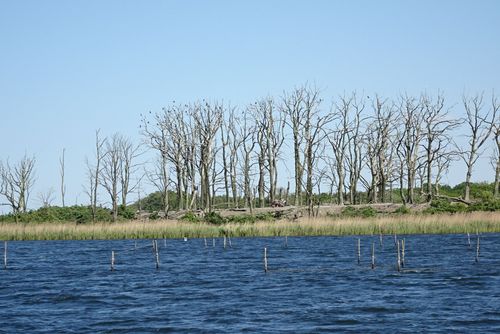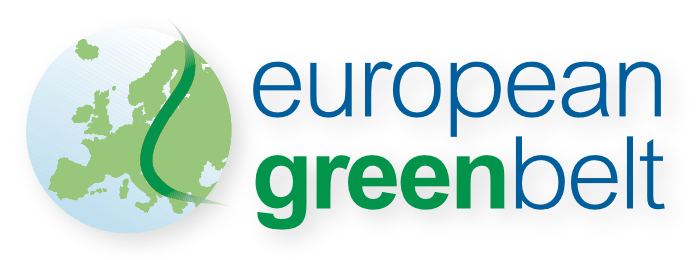Shifting waterbird colonies in Northwestern Poland: a significant natural process observed
The relocation of a formerly thriving bird colony from Grądzka Kępa to Chrząszczewska Island, due to habitat degradation, demonstrates the importance of monitoring for conservation planning along the European Green Belt.

On Grądzka Kępa, a small islet in northwestern Poland's Kamień Lagoon, only 40 nests remain from a once-thriving colony of grey herons and great cormorants. In contrast, over 1,000 nests are now found on nearby Chrząszczewska Island. This shift, driven by the death of old oak trees caused by years of guano buildup altering the soil, reflects a natural ecological process. Though common in large bird colonies, this case is notable for its local scale and long duration.
The observation is part of the ongoing waterbird monitoring for the Kamień Lagoon and Dziwna River Natura 2000 site of a BESTbelt project in the region. Since March, the team has conducted surveys by boat, land, and at night to track bird populations and inform conservation efforts.
This relocation highlights how large waterbird colonies can transform their habitats, prompting natural shifts in nesting. Such changes reveal important ecosystem dynamics and raise key questions for conservation: What landscape conditions support long-term nesting? Can alternative sites ease habitat pressure? How can these dynamics shape planning along the European Green Belt?
The project’s observation underscored the value of long-term monitoring and of understanding ecological change as a fundamental part of nature conservation.
The monitoring takes place under the EU-funded BESTbelt project “Revision of the draft conservation plan for the Kamień Lagoon and Dziwna River Natura 2000 site”, implemented by the Green Federation „GAIA” in collaboration with the West Pomeranian Nature Society from October 2024 to September 2026.
For more information, please contact: Aneta Kozłowska (Green Federation "GAIA"), fzbiuro(at)gajanet.pl
